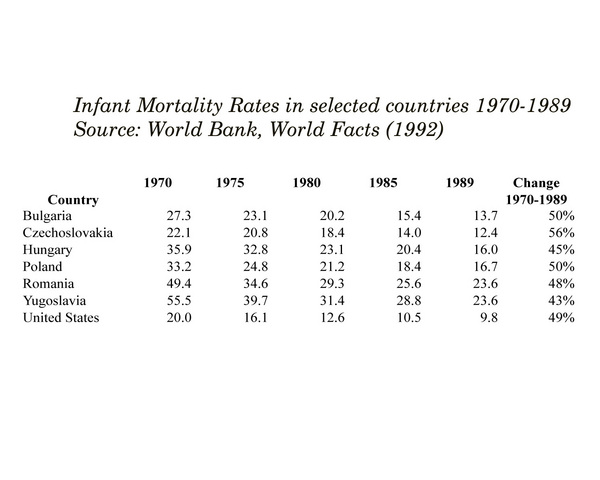Infant Mortality: Eastern Europe: 1970-1989

Annotation
One of the most important indicators of a societies transition to what economists often call “modern industrial society” is a decline in infant mortality rates. As you might imagine, declines in infant mortality rates are also very important to individual citizens, because it means that their children are much more likely to live to adulthood. This rate reflects the number of children who die before age one out of each 1,000 live births. The data in this table paint a conflicting picture—as socioeconomic data often do. On the one hand the data indicate the degree to which the regimes of Communist Eastern Europe were able to make substantial progress in reducing infant mortality in their countries between 1970 and 1989. On the other hand the data also demonstrate that while in some cases the Communist regimes were able to reduce the rate of infant mortality more rapidly than was the case in the United States, the actual number of infant deaths per thousand in several of these countries—especially Romania and Yugoslavia—was significantly higher than it was in the United States.
What factors do you think would cause a decline in infant mortality rates and why do you think the rates were so different across Eastern Europe?
This source is a part of the Economies in Transition in Eastern Europe, 1970-1990 teaching module.